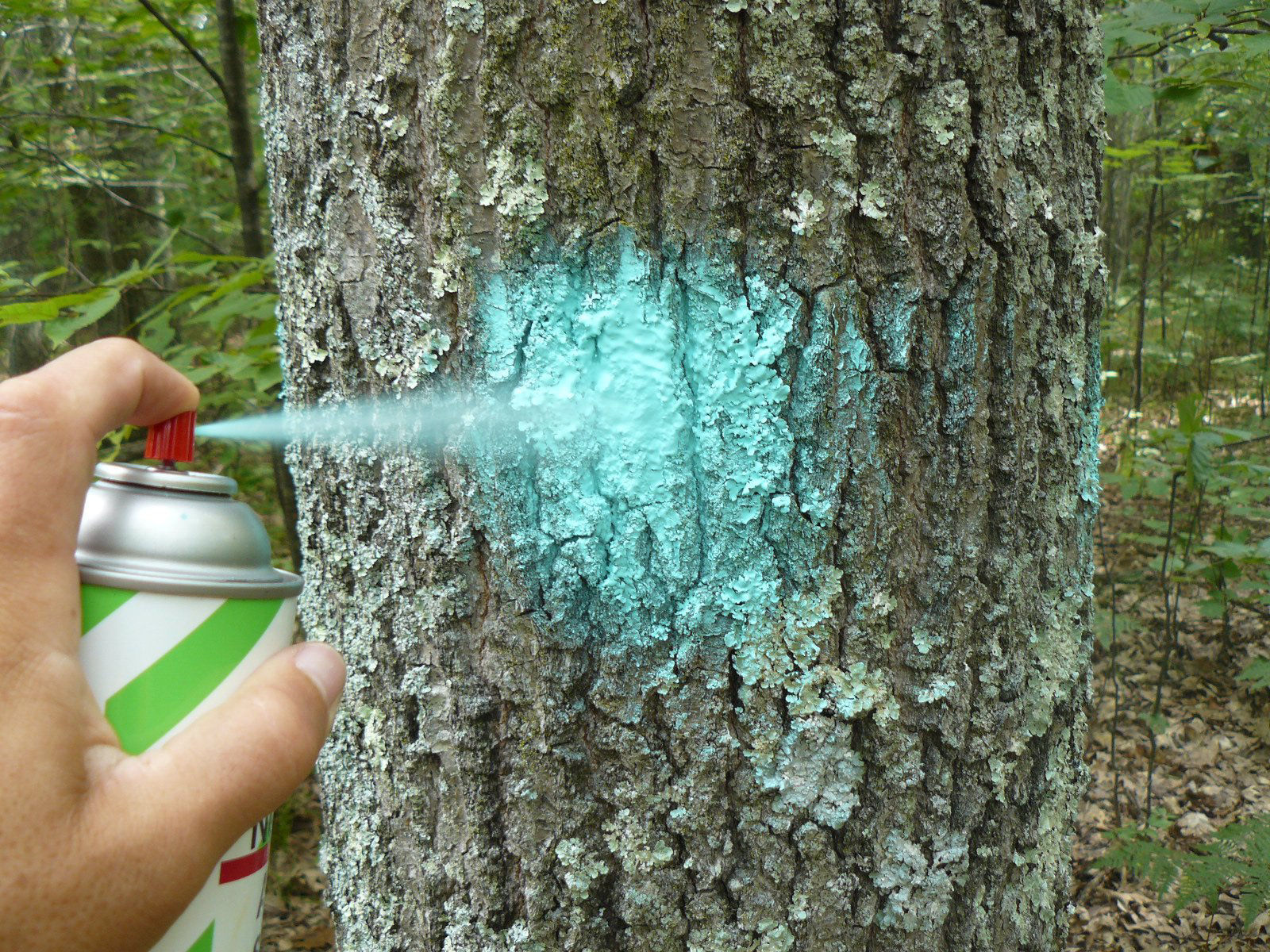The painted forest
Forest visitors may see trees marked with different colors of paint and cryptic numbers and letters. In most cases, that paint represents timber sale contract specifications.

Trees marked with paint tell a story and communicate timber sale contract specifications. The most common marks are orange on trees that are scheduled to be harvested and blue for property boundaries. However, different organizations may use alternative color schemes.
Trees sold in a timber sale are usually marked at both chest height and at the stump. Sometimes, trees are marked only on one side, the side from which the logger enters the stand. Where entry is less clear, the marks are on both sides of a tree, which is more often the case.
Stump paint is used to help foresters confirm that trees were properly harvested. Stumps without paint raise a red flag, especially if there are too many. Sometimes, an adjacent unmarked tree needs to be cut in order to get at a marked tree. Foresters take this into account when marking a stand, but sometimes leave access a bit tough for a logger.
Why can’t a logger simply buy paint and mark trees that the forester and landowner didn’t want harvested? Well, they can. But few loggers will cheat, which threatens their reputation. Where this sort of “timber trespass” is a problem, unique tracers can be added to the paint used by the forester.

Property lines are typically marked with blue paint. They’re rather evident because the painted trees are in a straight line. Legally and properly, boundary lines must be painted by a registered surveyor. Foresters will sometimes use blue paint when the timber sale gets close to ownership boundaries, but these are timber sale lines and not legal property lines. Few foresters are also registered surveyors.
When a timber sale is well within the property boundaries, especially on large ownerships such as public or corporate land, red paint is used to mark the edge of the timber sale These edges are painted facing the interior of the sale.
Whether blue, red, or another color, loggers see the color change and know they’re at a boundary of some sort. Color blind loggers can have difficulty differentiating some colors. Sometimes, the GPS in their processor will also tell them when they’re approaching a timber sale boundary or other relevant line.
In large timber sales with multiple units, the unit boundaries are often painted in yellow. At certain points, numbers or letters are painted on trees that identify the unit, usually on a large tree. Contracts may specify which units are to be harvested first or last. Sometimes, a timber sale unit will have special rules or must be cut during a particular time, such as winter only.
In timber sales where most of the trees are to be cut, such as a shelterwood or seed tree harvest, the forester may paint “leave” trees. The logger will harvest all unpainted trees, the inverse of a more conventional marking. A light blue-green color is sometimes used for these markings.
It’s important to understand that these color schemes are common convention but far from universally employed. People with questions need to first know the property owner and then how to contact them for an explanation.
When working with a forester on your own forestland, ask about the meanings of the paint colors. This way, you may better understand the specifics of a planned harvest or, perhaps, detect an error that should be brought to the forester’s attention before the timber sale begins.
One of the nation’s premier tree paint manufacturers is homegrown in Kingsford, Michigan. Nelson Paint has been around for over 70 years. The company has worked closely with the forestry community to make paint that is highly visible, durable, and non-toxic to trees. Paint needs to work in all seasons and conditions, on any type of tree bark pattern and texture. There’s more to the chemistry of paint than most people realize.
Foresters also have a wide choice of paint delivery systems, from aerosol cans and plastic tubes, to high-volume backpack sprayers. Using the right tool can reduce the time needed to set-up a timber sale or perform an inventory.
The next time you see a marked forest, see if you can figure out what’s going on. A bit of detective work can be enjoyable.



 Print
Print Email
Email